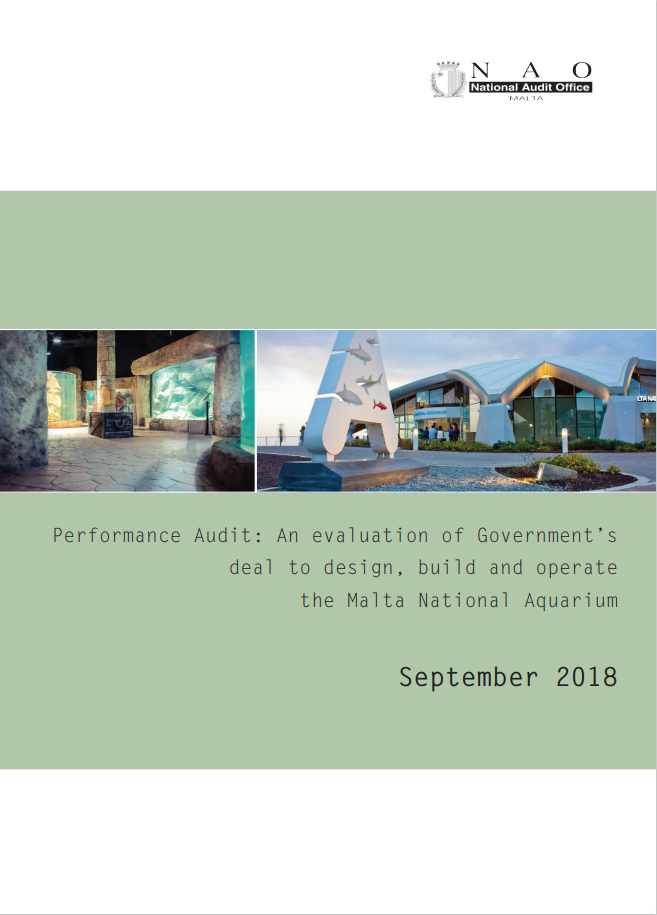- Home
- Publications
Publications
You may browse through our online list of NAO publications which include audit reports and annual reports. The audit reports are categorised according to the Classification of the Functions of Government (COFOG) developed by the OECD.
All Publications- Categories
- Publications Archive
- Events
- Careers
- About Us
 Environmental Protection October 2018
Environmental Protection October 2018Performance Audit: An evaluation of Government’s deal to design, build and operate the Malta National Aquarium
Download PublicationPress Release
The Auditor General outlined that the Malta National Aquarium (MNA) is making a substantial contribution to Malta’s tourism product and the project has generally exceeded its predetermined objectives. Nonetheless, this performance audit raised questions and identified issues whereby future service concession agreements involving the public and the private sectors would reflect a more balanced partnership where risks and benefits are equitably shared between the two main players.
When considering the semi-commercial nature of the use of public land involved in the Concession, the National Audit Office (NAO) estimates that the capital forked out by the Contractor amounts to around one fifth of the estimated €31 million representing the total cost of this development. This amount includes the foregone present value of the 20,000 square metre 50-year rent-free concession at Qawra estimated by NAO at €15.5million or €19.39 per square metre. On the other hand, the Malta Tourism Authority (MTA) contends that the value of such land approximates an average of €5.56 per square metre on the assumption that the value of this site is subject to the Government rates applicable for industrial development.
In cases, the contractual framework did not fully safeguard Government’s long-term interests. MTA consultants advised in favour of a 50-year rent-free consession. Nonetheless, NAO research shows that various international and local sources contend that a 50-year rent-free concession is longer than the norm since it limits Government’s opportunities to revise the agreement at more frequent intervals. While the Service Concession Agreement was forward looking and included claw-back clauses, such provisions did not fully anticipate the potential of significant positive changes to the economy or tourist arrivals. This brought about a growth in revenues, which substantially surpassed projections. In turn, this created a financial imbalance in the returns attributable to Government and to the Contractor within the project’s 50-year period.
MTA’s monitoring did not extend to all aspects of the Contract, which also considers a lump sum agreement for the design and construction of the MNA complex. Despite its advantages, the latter type of Contract reduces substantially the contractor’s obligations on cost reporting. Moreover, the appointment of an Auditing Body, which materialised two years after the start of the MNA’s operations, did not include a review of the Contractor’s annual audited accounts within its scope of evaluation.This Report elicited a number of points, which demand Government’s critical considerations to ensure a more balanced partnership between the public and private sectors on future major projects. At the outset, the value attributed to public land used in concessions is to reflect more the nature of the project, particularly when there are commercial or semi-commercial elements at play. Secondly, in the interest of transparency, public entities involved in evaluating project feasibility are to fully document workings regarding the cost of the proposed development, particularly in cases where lump sum contracts are involved. Finally, the contractual framework is to apply stricter claw-back clauses to anticipate the potentiality that the project generates abnormal revenue growth. NAO reiterates that there is scope for Government and the private sector to work in tandem on projects of national importance, where the parties share more equitably risks and benefits.
The Report proposes other recommendations aimed at the strategic and operational levels.
